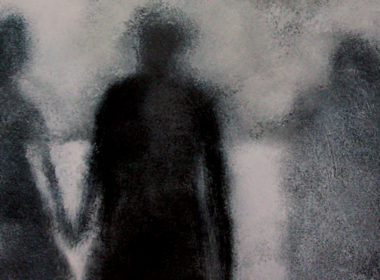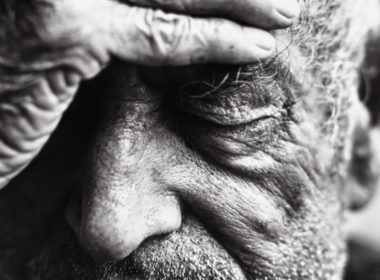The approach of integrating coercive control into a domestic violence offence recognises that coercive control is not a form of violence against women. Rather, it is at the core of domestic violence.
Most victims of domestic violence will suffer from psychological abuse and coercive control long before they are killed. The emotional violence festers in the cracks of our criminal justice response, manifesting in ways ranging from financial control to holding someone captive in their home. Could criminalising coercive behaviour save countless women before it’s too late?
“It is the starting point of violence. It is horrendous to experience and if we put perpetrators away before it escalates, we are likely to save more lives.”
Belinda*, a long-time victim of coercive control, gave this impassioned plea for action on psychological abuse in domestic violence to a recent parliamentary inquiry.
Her experience is not unique. Before being killed at the hands of their current or former partners, most of NSW’s recent domestic violence murder victims suffered through severe episodes of psychological and emotional abuse.
Instances of coercive control – cutting off access to money, installing surveillance devices in the home or on a phone, isolating from family and friends, threatening to withdraw support for a visa or to kill a pet – can destroy a woman who will never experience a physical assault. But many do not recognise themselves as victims.
In February, Brisbane woman Hannah Clarke and her three children were murdered by her ex-husband, the children’s father, in a sickening crime that followed years of psychological control. Hannah’s family told media they had not seen the warning signs of abuse “for a long time” and that Hannah herself had questioned whether the relationship was abusive because she had not been physically assaulted.
“Not all domestic abuse is physical,” Hannah’s brother Nathaniel told Channel Nine.
Years before Hannah’s case horrified the nation, the 2011 murder of Lisa Harnum, thrown from a high-rise balcony in Sydney’s CBD by her fiancé Simon Gittany, was one of the first high-profile cases of domestic abuse that had not been preceded by physical assaults, but rather around-the-clock surveillance and control on her movements, employment, outfits and choice of friends.
Many of the state’s legal and domestic violence advocacy bodies believe lawmakers must not wait for another tragic headline to consider criminalising coercive control – and with a spike in violence during COVID-19 lockdowns, they say time is running out.
In NSW, the Crimes (Domestic and Personal Violence) Act 2007 does not make explicit reference to psychological, financial or emotional abuse, unlike similar laws in Tasmania that are rarely used.
South Australia is currently considering laws that would criminalise coercive control and impose a maximum jail sentence of up to seven years.
The NSW Domestic Violence Death Review Team’s most recent report, investigating murders between 2017 and 2019, found 77 of the 78 perpetrators used coercive control on their partner before killing them. This follows earlier research from the NSW Bureau of Crime Statistics and Research in 2016 that found women who experienced emotional abuse were 20 times more likely to subsequently suffer from physical violence.
The death review team recommended the government “examine the extent to which existing laws … respond adequately to non-physical forms of domestic and family violence and to patterns, rather than incidents, of violence”, including “monitoring the progress and implementation of offences of coercive control and domestic abuse in other jurisdictions”.
In many cases, it appeared the perpetrator “had refrained from using physical violence to avoid police intervention”.
“Victims did not always identify that what they were experiencing was domestic violence and abuse, instead believing that their experiences were part of ordinary relationship dynamics,” the review team concluded.
“In many cases, the relationship between the perpetrator and victim appeared to be ‘normal’ from the outside (for instance, to friends and relatives) despite perpetrators using a range of controlling, but not physically abusive, behaviours against the victim prior to the fatal episode.”
 Hayley Foster
Hayley Foster
A COVID-19 emergency
While research from the NSW Bureau of Crime Statistics and Research (BOCSAR) recorded no rise in recorded cases of domestic violence assault in April – when pandemic restrictions in NSW were at their harshest – other studies consistently point to a rise in calls for assistance from helplines and victim support networks.
Women’s Safety CEO Hayley Foster said local support organisations had recorded significant increases in requests for help.
That includes psychological violence. The Australian Institute of Criminology found between February and May of this year, one in 10 women who responded to their survey had suffered domestic violence during the lockdown conditions in the form of emotionally abusive, harassing or controlling behaviour.
“Criminalising coercive control is essential if we want to reduce violence against women, make any headway in reducing the figures around violence, and also prevent domestic violence homicide,” Foster tells LSJ.
“There are so many steps along the way where we can fail victims of domestic violence: there are so many opportunities for her to be let down.
“Depending on what police officer turns up at an incident, or which station she goes to make a complaint, to the prosecutor or the magistrate … her access to safety and justice can be irrevocably compromised.
“The approach of integrating coercive control into a domestic violence offence recognises that coercive control is not a form of violence against women. Rather, it is at the core of domestic violence.
“The current understanding of domestic violence as an incident-based offence, rather than a sustained pattern of behaviours, further endangers women by increasing the likelihood that they will be misidentified as the primary aggressor.”
But Foster says her organisation would only support the enacting of coercive control legislation in NSW “if we have system reform to accompany it”.
This includes working to address rates of misidentifying the primary aggressor in a domestic violence incident; in a recent Women’s Safety NSW survey 70 per cent of the frontline worker respondents said this occurred frequently.
Foster also says the laws must be accompanied with extensive training, particularly for police.
“When domestic violence is half of what they are doing [in terms of callouts], it needs to be given more weight in terms of their training,” she says.
“If we enact a law that is more fine-tuned and nuanced, then we need a workforce that has the appropriate expertise in identifying, investigating, assessing, prosecuting and judging such matters in what is a highly specialised field.”
Women’s Safety NSW proposes the new laws carry an objective standard, with a reasonable person test to avoid “the courts being clogged up with cases where anybody can make a claim.”
“While there should be a subjective standard when assessing whether the perpetrator intended or was reckless in instilling fear in their victim, the objective standard … when ascertaining the likely impact upon the victim may be more appropriate and lead to greater accessibility for victims,” Foster says.
“It will also reduce the risk of systems abuse by primary domestic abuse aggressors.
“We also recommend ensuring that the definition and elements of Australian state- and territory-based coercive control offences be explicit that the offence covers a range of behaviours used to exert power and control over the victim, enabled through fear and intimidation.”
 Brad Chilcott
Brad Chilcott
There is a lot more to be done and a great deal of education is needed … people may often model their relationships on their parents’ relationship or their first relationship. We need to help people better understand what they should expect from a loving relationship.
An ‘ongoing challenge’ for government
NSW Attorney General Mark Speakman tells LSJ the state government has no immediate plans to introduce new laws, and says it remains “an ongoing challenge for law enforcement and legal minds” to create “appropriate legislation”.
However, he acknowledges the evidence around coercive control is a “consideration” for criminalisation.
“You don’t have to have bruises to be a victim of domestic and family violence – emotionally abusive, manipulative, coercive, and controlling behaviour are, sadly, all forms of domestic abuse,” Speakman tells LSJ.
“Calling out this behaviour for what it is, raising awareness and educating the community are integral parts of the ongoing battle to rid our society of the scourge of domestic and family violence.
“In considering any new laws, you’d have to be careful you didn’t overreach in your endeavour by criminalising what people might indeed regard as bad behaviour, while not being so bad as to deserve a criminal sanction.
“However, evidence also demonstrates that coercive, controlling behaviour can often be a precursor to homicide. This is one significant consideration for criminalising this sort of behaviour.
“While there are no imminent plans to introduce similar legislation in NSW, I have requested that my Department conduct a review of existing coercive control legislation in other jurisdictions.
“I’m particularly interested in seeing how Scotland’s new laws are operating, including how often charges are laid, when they progress to a defended hearing, and how often that results in a conviction.”
Paul McGorrery, a lawyer, legal policy expert and PhD candidate exploring coercive control, supports the laws as a “course of conduct” model as opposed to incident-based criminalisation.
“We are then looking at the relationship as a whole, the pattern and culmination of behaviour. It moves away from the incident-based model of offences and into a course of conduct model, similar to how offences like stalking were introduced in the 1990s,” he tells LSJ.
“Increasingly, non-physical acts have been recognised as constituting serious and enduring harms and many victims may report this type of abuse as the worst they have experienced.
“I don’t necessarily see negatives of criminalising coercive control – it is more a matter of considering the risks. One such risk is to just copy and paste legislation from another country, another jurisdiction and not do the proper consultation and see how the laws can work in Australia.”
Similar to the Attorney General’s reservations on the overreach of the criminal law, the case to introduce coercive controls is met with unease by some in the profession. They question how the instrument of the law can appropriately distinguish between unhealthy and criminally abusive relationships.
But what about where it did?
The Scottish ‘gold standard’
Dr Marsha Scott, CEO of Scottish Women’s Aid, is one of the pioneers of coercive control laws described by family violence policy experts as “the gold standard”.
“I was sitting in the Scottish Parliament … when the vote was passed. There was a standing ovation. We cried,” Scott tells LSJ.
“This sounds very corny, but I really felt like the thousands of women and children who’d resisted and survived coercive control, many of whom went on to form the backbone of the Women’s Aid movement in Scotland, were in the room with us.”
The Domestic Abuse (Scotland) Act, introduced in April 2019, criminalises the “coercive and controlling behaviours” of offenders with a maximum 14-year jail sentence. Rather than identifying specific behaviours, the law focuses on the effects they have, or could have, on the victim-survivor.
Prosecutors must establish a pattern: at least two incidents that a reasonable person would perceive as causing physical or psychological harm. Critically, there does not need to be evidence of physical or sexual violence for charges of coercive control to be laid.
The laws define abusive behaviour as conduct that is violent, threatening or intimidating, or that aims to make a partner dependent or subordinate, isolates them from friends, relatives or other sources of support. It covers the controlling, regulating or monitoring of day-to-day activities and depriving or restricting freedom of action.
“I think it is too early to call the laws a success [but] we have seen stats only from the first year of implementation, and those are mostly encouraging,” Scott says.
“We have been happily surprised with how fast cases were reported by Police Scotland to the Crown for prosecution—about 1000 were prosecuted I think in the first year.”
The law as education
McGorrery says “another substantial benefit [of new laws] is regarding community education”
“That can sometimes be quite a bomb to drop, because we are then looking at the criminal law as an educative function, rather than a restrictive function,” he tells LSJ.
“But by doing this, it can transform into a dinner table conversation and it allows people to feel they have approval to denounce the behaviour. It can also send a message to victims that they do not have to tolerate this, and that police will intervene.
“With the Scottish model, they ran tens of thousands of training sessions [before the laws came into effect] and they had 400 charges within three months, because the police, the prosecutors, the judges and the community more broadly had an understanding of what the laws were trying to do.”
Brad Chilcott, the new CEO of White Ribbon Australia, knows his organisation has a critical role to play in educating the community.
“With coercive control, we must recognise it is violence in and of itself, this kind of manipulation, control and isolation,” Chilcott tells LSJ.
“Exerting this type of power is an act of violence, as it is reducing agency and the ability to live a full life.
“Public education is really important, as it helps with people recognising and calling out this kind of unacceptable behaviour. I do think that changing the law is important, as it makes a public declaration that this is unacceptable behaviour.
“There is a lot more to be done and a great deal of education is needed … people may often model their relationships on their parents’ relationship or their first relationship. We need to help people better understand what they should expect from a loving relationship.”
“The advocacy and work being done in communities to educate about healthy relationships, it can work hand-in-hand and really effectively with the law.”




